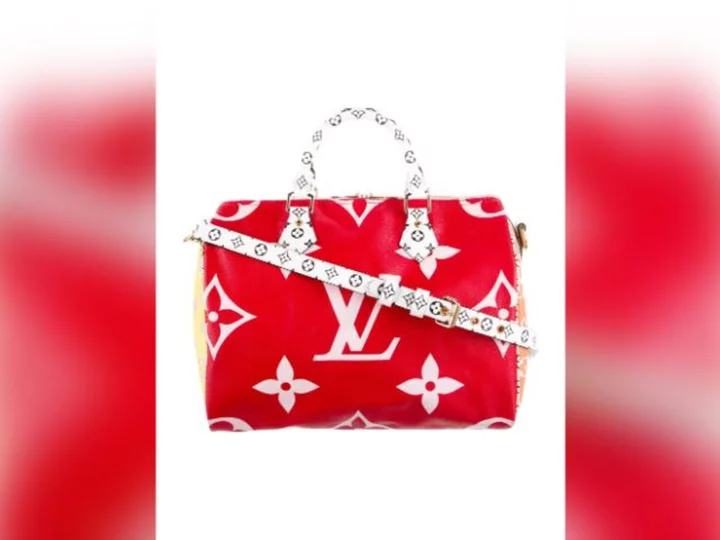Jitters about the health of the economy aren't stopping consumers from buying, but they are becoming more value-driven and less picky about what they buy, even when they're shopping secondhand.
In other words, that pink Alexander McQueen blouse with the seam split or not-so-gently-used Gucci canvas hobo bag is starting to look pretty good in this economy, even to -- or especially to -- label-conscious shoppers.
Among its clientele, luxury resale platform The RealReal (REAL) said shoppers aren't shying away from purchases of pricey name brand clothing, handbags and jewelry at resale, but, they are trading down in prices and product condition or quality, according to The RealReal's 2023 annual resale report.
"Value is driving the adoption and evolution of resale. Value can mean different things to different people, whether they find value in what the item costs, what it reminds them of or what the item evokes emotionally," Rati Sahi Levesque, The RealReal's president and chief operating officer, said in the report.
The demand for value, specifically among Millennnial and Gen Z shoppers, is partially why sales of "fair condition" products listed for sale on The RealReal are booming currently, the report said.
Items that are listed as "fair condition" are at the very bottom of its condition standards, Samantha McCandless, chief merchandising officer with The RealReal, said in an interview with CNN.
She said the company evaluates products that are accepted for resale on a five-scale level that ranges from "pristine" condition (items that new, with tags and have never been used), "excellent" (never been used but without original tags), "very good" (items with just a few slight imperfections), "good" (showing some signs of use) and "fair condition."
"Fair condition clothing, shoes and handbags are items that have been worn and enjoyed. They could show stitching coming loose, and there's noticeable imperfections. It's very clearly a worn look," said McCandless.
Accordingly, price points go down from the top to the bottom-most tier of product condition, depending on the product. Even though fair condition bags, shoes, and accessories show signs of heavier wear, The RealReal's report said demand for fair condition bags is up 130% this year. The category overall is seeing a 265% surge in demand, largely driven by younger shoppers.
For example, a Chanel flap bag in "fair condition" is $4,900, but in "excellent" could cost 65% more, or about $8,000. Depending on the year, covetability, and other factors, shoppers could potentially save between 60%-80% if they buy a luxury branded product in "fair condition" versus in "pristine" condition, according to The RealReal. (Buyers also have a window to return their purchases.)
Consequently, the company said it recently expanded the category to also include fair-condition clothing.
At the same time, McCandless said this trading-down trend in resale is also being influenced by other factors. "I agree 100% that accessibility is part of this... but it's bigger than just that," she said.
She said Millennials and Gen Z are actively embracing a "worn look" aesthetic.
"Historically, fashion has been about a desire to look a certain way: polished, pristine, and remaining on trend. But, with the recent rise in fair condition, shoppers have embraced imperfection. They're willing to buy older, worn items that are made well and still remain beautiful, and they wear them with pride," said McCandless.
"We're getting requests specifically for fair condition merchandise. Within certain fashion circles, the worn look has become a badge of honor," she said.
Overall, the secondhand market continues to gain momentum, with consumers hyper-focused on value. The market for "just re-worn" clothing is expected to reach $70 billion in sales by 2027, from sales of $44 billion in 2023.

